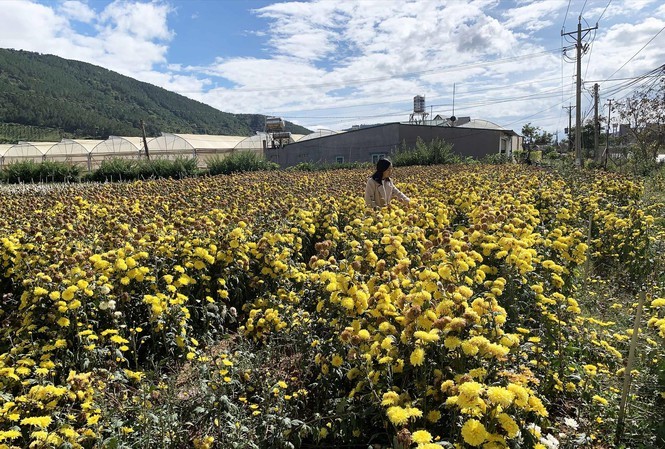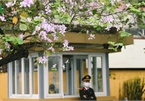Lam Dong authorities estimate that the province has 8,890 hectares of flower growing area in 2019 with the output of 3,350 million branches. Of this, only 325 million branches can be exported, worth $48 million, which accounts for less than 10 percent of the local output.

The remaining 90 percent of flower output is consumed domestically. Analysts commented that the heavy reliance on the domestic market leads to the supply and demand imbalance and has made the flower prices unstable.
Farmers cannot set the flower selling price because the price is controlled by merchants.
Da Lat’s flowers are famous as they are beautiful. But sometimes they remain unsold and are used to feed buffalos or left to rot at the gardens.
| As the country’s ‘flower metropolis’, Da Lat exports only 10 percent of its output. The exporters are large companies, especially foreign invested companies. |
Da Lat’s flowers are mostly exported to Japan (over 60 percent), Australia, Denmark, Thailand, Malaysia, Singapore and South Korea.
Chrysanthemum tops the list of export items (accounting for 52 percent). Da Lat also exports in vitro seedlings (30 percent), carnations (10 percent), lilies, sunflowers and orchids.
Only large companies, especially foreign invested enterprises (FIEs), can export flowers. Dalat Hasfarm alone makes up 60 percent of total exports. This is a large company in Southeast Asia which grows 200 million flower branches a year and provides 250 million seedlings to the market.
Da Lat Hasfarm exports flowers to more than 10 countries and territories in Asia, including the choosy market of Japan.
According to Aad Gordijin, general director of Da Lat Hasfarm, Da Lat’s farmers are industrious, creative and experienced, but flower farming still has not become professional because of the small scale of farms with the average area of just 2,000-5,000 square meters per household.
Because of the small farming scale, flower growers lack financial capability and don’t have sufficient resources to invest in high technologies and modern glasshouses. They find it difficult to satisfy demand in output.
Gordijin said in order to export flowers, growers need to have large enough production land area. Besides, they need to have modern production process and follow methodical post- and after-harvesting product quality control.
Having 190 hectares of glasshouse, Da Lat Hasfarm has joined forces with hundreds of households in Da Lat to expand the growing area and increase the output.
Experts in Da Lat said farming flowers for export can bring higher profit. However, Da Lat farmers’ exports get stuck because of the problem of seeds. Farmers want to buy copyrighted seeds, but they lack information. Meanwhile, the world’s most prestigious seed production companies are not interested in the Vietnamese market for fear of copyright problems.
Thanh Lich

Hanoi streets adorned with Ban flowers in full bloom
With Ban blossoms coming into full bloom around mid-March, the streets of Hanoi are starting to become coloured by the delicate pink flowers which are reminiscent of orchids.
 As the country’s ‘flower metropolis’, Da Lat exports only 10 percent of its output. The exporters are large companies, especially foreign invested companies.
As the country’s ‘flower metropolis’, Da Lat exports only 10 percent of its output. The exporters are large companies, especially foreign invested companies.